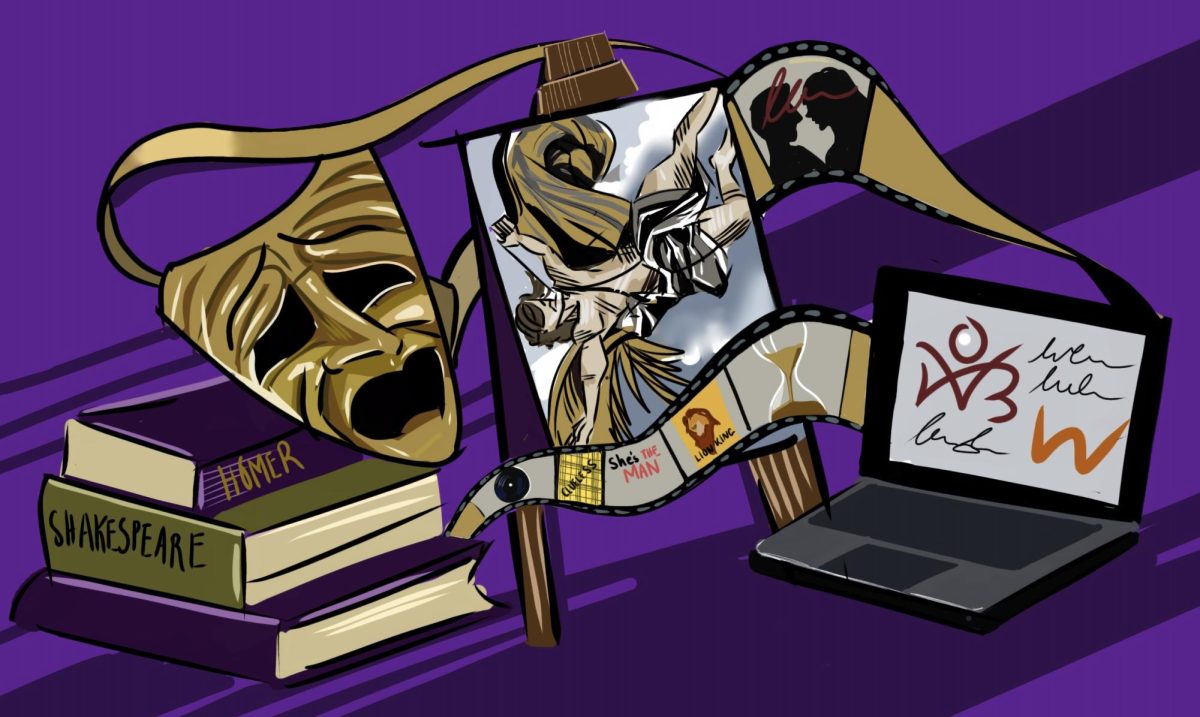In the last century, various genres in the Western film industry have been elevated by one generation and discarded by the next at the whim of fickle factors like resonance with political climate, novel technology, and economic concerns.
Westerns
Westerns are commonly seen as a staple of American culture and even representative of it, pushing themes like independence and manliness. They were extremely popular during the Silent Era, the period from 1894 to 1927 in which the first films were produced, before the advent of sound in movies, with one of the first big westerns being “The Great Train Robbery” (1903).
The popularity of westerns declined for a decade after movies with sound were produced for the first time around 1930. However, the genre was brought back around 1940, with 1940-1960 even being the Golden Age of westerns. In the 1950s, the number of westerns produced exceeded that of all other genres, with hits like “Red River” (1948) and “The Searchers” (1956).
The values portrayed in westerns, such as great destinies and honor, resonated with the audience of the time, who saw America emerge as a global superpower. However, westerns’ values would soon become outdated.
Westerns grew less popular in the 1960s due to the political climate of the time—old westerns typically contained racist and toxic masculine values, which didn’t resonate with the younger generation’s support of progressive values.
In the 1970s and 1980s, the youth also began finding traditional elements of westerns in other places; bold heroes and exciting, mysterious expanses were no longer confined to the West alone. Main characters of action and adventure movies, such as Indiana Jones, became their heroes, and as scientists turned to the stars, so too did younger generations. Film series and TV shows like “Star Wars” and “Star Trek” captivated watchers, taking away from the popularity of westerns.
Of course, westerns also lost popularity as a consequence of its loss of novelty. With so many of them produced in the mid-1900s, there were few new stories to tell by the end of the Golden Age. Nowadays, producers of western films create novelty by subverting the genre, but westerns simply don’t have the same popularity as they used to.
Movie musicals
Movie musicals grew to prominence in the mid-1900s after the advent of sound. The complex dance numbers and original music were perfect for showing off advances in filmmaking, which made studios more eager to produce them.
Both live-action and animated movie musicals were popular. “The Wizard of Oz” (1939) and “Singin’ in the Rain” (1952) were particularly well-received live-action movie musicals. Disney’s animated movie musicals, such as “Snow White and the Seven Dwarves” (1937), appealed to families and contained many original songs, which further increased the popularity of movie musicals at the time.
However, the popularity of movie musicals declined in the late 1900s. Big box office failures dissuaded the production of these films among studios. Additionally, TV took away the novelty of music in films by providing an alternate source of musical entertainment. Film culture also grew darker and more somber, a trait not really associated with movie musicals.
Finally, the rise of action movies contributed to the end of the movie musical age, just as with westerns. Action franchises like the Marvel Cinematic Universe (MCU) generate billions of dollars in revenue, which movie musicals can’t match. With action and fantasy films dominating the box office and the profit from musicals fluctuating, many studios erred on the side of caution and stopped producing movie musicals.
The genre of movie musicals has now fallen into a vicious cycle: fewer musicals are produced, leading to further disinterest in them, which again leads to fewer musicals being produced. Despite successes like the recent “Wonka,” which had a generally positive reception, studios continue to avoid this genre unless they have the expectation of success that the celebrity of someone like Timothée Chalamet might bring.
Superhero movies
Superheroes first rose out of the social and political climate of the mid-1900s. Captain America was a patriotic champion to rally behind during the dark and uncertain World War II years, whereas the X-Men, who faced discrimination because of their mutations, developed during the Civil Rights movement.
However, only in the past two decades have superhero movies really skyrocketed in popularity. As with movie musicals, this upward trend had to do with new technology. Special effects and CGI allowed studios to portray superheroes’ powers in more dramatic and flamboyant ways, as well as made the fantastical elements of fictional worlds — such as Asgard in “Thor” (2011) — possible to showcase on the big screen.
Franchising has also played a key role in the superhero craze. Think of the MCU, for instance, a household name throughout America. Such franchises can draw on a pool of returning viewers when putting out new films, creating a stronger guarantee of profit and less hesitation to produce more films. New viewers are also drawn to superhero movies simply because of the popularity of their franchises and the hype surrounding them. Also, the popularity of superhero movies is buoyed up by various TV shows, video games, and merchandise put out by the franchise.
However, as with other genres, superhero movies have begun to lose their novelty. Only so many special effects can be considered new and innovative. With a shift away from storylines that resonate with the political climate of the time and towards fancier effects, superheroes have lost what made them popular in the mid-1900s. What remains is the nostalgia and familiarity brought by characters like Spider-Man and the Joker. As with westerns, recent films are often only critically acclaimed when offering alternate, unexpected representations of these characters.
Perhaps we are seeing the fall of superhero movies as our generation grows up, and in a few years’ time, another genre will rise to captivate the next.



















